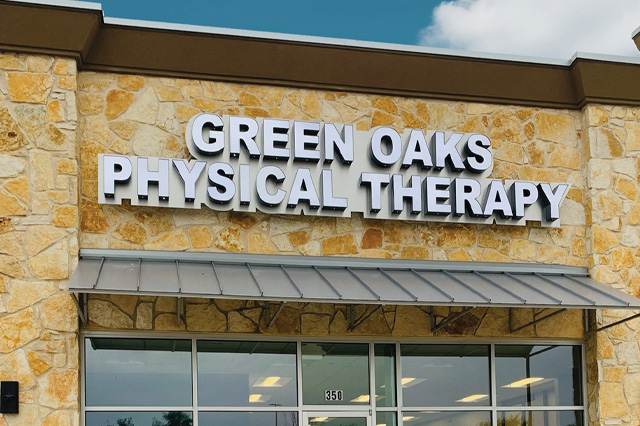Manual Therapy
The Healing Touch: Exploring the World of Manual Therapy in Physical Rehabilitation
In the realm of physical therapy, a hands-on approach often takes center stage. Manual therapy, a specialized technique performed by skilled therapists, has emerged as a powerful tool in alleviating pain, restoring function, and promoting overall well-being. This blog post delves into the fascinating world of manual therapy, exploring its principles, techniques, and the transformative impact it can have on individuals undergoing physical rehabilitation.
Understanding Manual Therapy
Manual therapy is a comprehensive term encompassing various hands-on techniques designed to assess, treat, and manage musculoskeletal and neuromuscular conditions. Unlike passive interventions that rely solely on equipment or modalities, manual therapy involves direct physical interaction between the therapist and the patient. This personalized approach allows therapists to address specific issues, tailoring treatments to individual needs.
Principles of Manual Therapy
1. Assessment and Diagnosis: Manual therapy begins with a thorough assessment of the patient’s condition. Skilled therapists employ a combination of clinical reasoning, observation, and hands-on techniques to identify areas of dysfunction, restriction, or pain. This diagnostic phase is crucial for developing a targeted and effective treatment plan.
2. Hands-On Techniques: The hallmark of manual therapy lies in the therapist’s hands-on approach. Various techniques may be employed, including joint mobilization, soft tissue manipulation, stretching, and muscle energy techniques. These hands-on interventions aim to improve joint mobility, release tension in muscles and fascia, and enhance overall movement patterns.
3. Patient Education: Integral to the manual therapy process is patient education. Therapists empower individuals by explaining the underlying mechanisms of their condition, detailing the goals of manual therapy, and providing guidance on self-care strategies. Educating patients fosters active participation in their recovery, promoting long-term success.
Common Manual Therapy Techniques
1. Joint Mobilization: This technique involves skilled movements applied to a joint to modulate pain and restore normal joint mechanics. Therapists use graded levels of force to target specific joints, enhancing mobility and reducing stiffness.
2. Soft Tissue Manipulation: Soft tissue techniques, such as massage and myofascial release, target muscles, tendons, ligaments, and fascia. These interventions aim to alleviate muscle tension, break down scar tissue, and improve tissue flexibility.
3. Muscle Energy Techniques: Muscle energy techniques involve active patient participation in resisting specific therapist-directed movements. This approach is effective in enhancing muscle length, promoting joint mobility, and addressing muscular imbalances.
4. Strain-Counterstrain: Also known as positional release, strain-counterstrain involves placing the affected body part in a position of comfort to reduce pain and muscle spasms. This technique is particularly useful for treating tender points and trigger points.
The Role of Manual Therapy in Physical Therapy
1. Pain Management: Manual therapy is a potent tool in managing pain associated with musculoskeletal conditions. By targeting pain at its source and addressing contributing factors, therapists can provide relief and improve the overall quality of life for individuals experiencing chronic pain.
2. Restoring Mobility and Function: Joint restrictions, muscle tightness, and movement limitations can significantly impact an individual’s ability to perform daily activities. Manual therapy interventions work to restore optimal joint mobility, enhance flexibility, and improve overall movement patterns, ultimately aiding in the restoration of function.
3. Post-Surgical Rehabilitation: After surgical procedures, manual therapy plays a crucial role in the rehabilitation process. Therapists use hands-on techniques to reduce postoperative pain, prevent scar tissue formation, and facilitate the healing of tissues while ensuring a gradual return to normal function.
4. Sports Injury Rehabilitation: Athletes often turn to manual therapy to recover from sports-related injuries. Whether it’s addressing muscle strains, joint sprains, or overuse injuries, manual therapy can expedite the healing process and help athletes regain peak performance.
In the dynamic field of physical therapy, manual therapy stands out as a holistic and patient-centered approach to rehabilitation. By combining skilled hands-on techniques with personalized assessment and education, therapists can address a myriad of musculoskeletal issues, from pain management to functional restoration. As research continues to support the efficacy of manual therapy, its role in promoting healing and enhancing well-being is likely to expand, further solidifying its place in the toolkit of modern rehabilitation.

Request an Appointment
Fill out our online form and we will contact you and schedule your visit.

Find Your Location
17 convenient locations across the Fort Worth and Dallas area.
